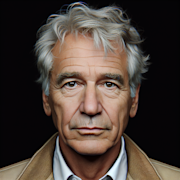The Spirit of the Beehive (1973)

In the world of cinema, there are some films that transcend time and space, leaving a lasting impact on audiences for years to come. One such film is ‘The Spirit of the Beehive’, a Spanish masterpiece released in 1973. Directed by Victor Erice, this film has been praised for its haunting beauty, deep symbolism, and emotional impact. In this blog post, we will delve into the world of ‘The Spirit of the Beehive’, exploring its themes, characters, and cultural significance.
Plot Summary
Set in the aftermath of the Spanish Civil War, ‘The Spirit of the Beehive’ follows the story of a young girl named Ana who becomes fascinated by the classic horror film ‘Frankenstein’. After watching the movie at her local village cinema, Ana becomes convinced that the monster from the film is real and living in an abandoned farmhouse nearby. Determined to find the monster, Ana embarks on a journey of self-discovery and introspection, leading to a series of profound encounters and revelations.
Themes and Symbolism
One of the key themes of ‘The Spirit of the Beehive’ is the exploration of innocence and imagination. Through the character of Ana, the film delves into the magical world of childhood, where reality and fantasy blend seamlessly. As Ana grapples with her own fears and desires, she begins to question the nature of reality and the power of storytelling. The film also explores the legacy of the Spanish Civil War, with the abandoned farmhouse serving as a metaphor for the scars of the past that continue to haunt the present.
Symbolism plays a significant role in ‘The Spirit of the Beehive’, with recurring motifs such as bees, mirrors, and masks adding depth and complexity to the narrative. Bees, in particular, are used to represent the themes of community, hierarchy, and collective consciousness. Mirrors are a symbol of reflection and self-awareness, while masks represent the duality of human nature and the masks we wear to hide our true selves from the world.
Visual Aesthetics
One of the most striking aspects of ‘The Spirit of the Beehive’ is its stunning visual aesthetics. Shot in the rural countryside of Spain, the film captures the beauty and desolation of the landscape, with long, sweeping shots of open fields and abandoned buildings. The use of natural light and shadow creates a sense of mystery and melancholy, adding to the film’s dreamlike atmosphere. The cinematography by Luis Cuadrado is truly a work of art, with each frame meticulously composed and framed to perfection.
Cultural Impact
Despite its modest budget and limited release, ‘The Spirit of the Beehive’ has become a cult classic among cinephiles and critics alike. The film has been praised for its poetic storytelling, evocative imagery, and powerful performances, particularly from Ana Torrent who plays the role of Ana with a depth and nuance beyond her years. ‘The Spirit of the Beehive’ has inspired countless filmmakers and artists, with its influence seen in works ranging from Guillermo del Toro’s ‘Pan’s Labyrinth’ to Sofia Coppola’s ‘The Virgin Suicides’.
Conclusion
In conclusion, ‘The Spirit of the Beehive’ is a timeless masterpiece that continues to captivate and inspire audiences over four decades after its release. With its haunting beauty, profound themes, and poetic storytelling, the film stands as a testament to the power of cinema to transport us to another world and illuminate the darkest corners of our own hearts. Whether you are a seasoned cinephile or a casual moviegoer, ‘The Spirit of the Beehive’ is a film that demands to be seen and savored, leaving a lasting imprint on your soul long after the credits roll.

Desmond van der Walt
Journalist
More From Classics Authority Movies

Movie
The Art of Adaptation: Classic Novels That Transcend the Screen

Movie
Spirited Away (2001)

Movie
The Magnificent Ambersons (1942)

Movie
No Country for Old Men (2007)

Movie
Reel Resilience: Classic Films That Withstood the Test of Time

Movie
Chinatown (1974)





